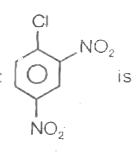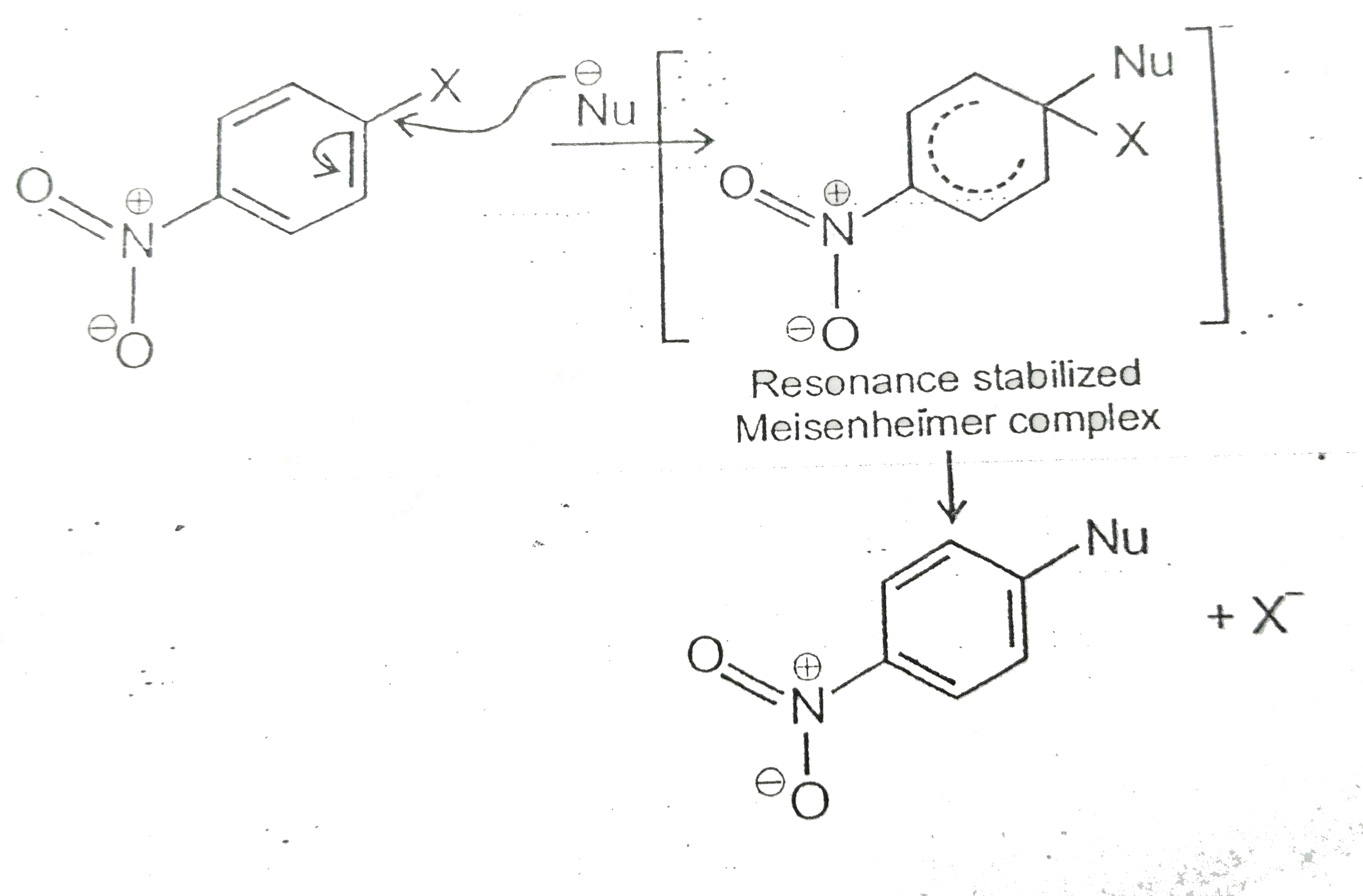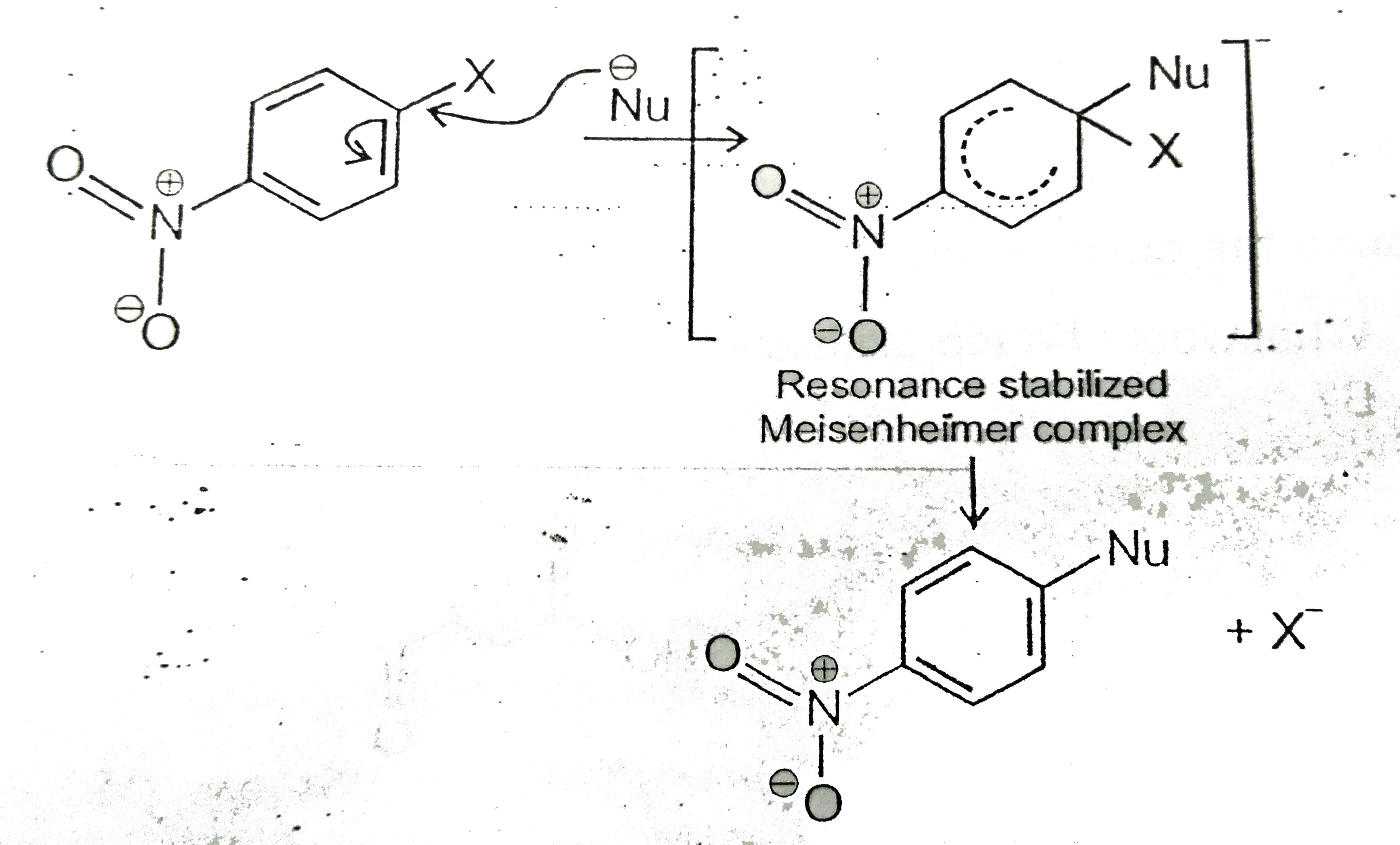Give reasons for the following
(a) The presence of −NO2 group at ortho or para position increases the reactivity of haloarenes towards nucleophilic substitution reactions .
(b) p-dichlorobenzene has higher melting point than of ortho or meta isomer .
( c) Thionyl chloride method is preferred for preparing alkyl chloride from alcohols.
The presence of −NO2 group at ortho or para position increases the rectivity of haloarenes towards nucleophilic substitution reactions because nitro groups at ortho or para position withdraw the electron density from the benzene ring facilitating the attack of the nucleophile.
( b) Melting point of para isomer is quite higher than that of orhto or meta isomers.This is due to the fact that it has a summetrical structure and therefore ,its molecules can easily pack closely in the atmosphere leaving behind pure alkyl chlorides ,
Topper's Solved these Questions
- XII BOARDSBOOK - XII BOARD PREVIOUS YEAR PAPER ENGLISHCHAPTER - XII BOARDSEXERCISE - SECTION-D
12 Videos
- XII BOARDSBOOK - XII BOARD PREVIOUS YEAR PAPER ENGLISHCHAPTER - XII BOARDSEXERCISE - CHEMISTRY (Theory) [SET - I]
34 Videos
- XII BOARDSBOOK - XII BOARD PREVIOUS YEAR PAPER ENGLISHCHAPTER - XII BOARDSEXERCISE - SECTION-B
22 Videos
- SAMPLE PAPER 2019BOOK - XII BOARD PREVIOUS YEAR PAPER ENGLISHCHAPTER - SAMPLE PAPER 2019EXERCISE - SECTION: D
1 Videos
Similar Questions
Assertion (A) Presence of a nitro group at ortho or para position increases the reactivity of haloarenas towards nucleophilic substitution.
Reason (R ) Nitro group, being an electron withdrawing group decreases the electron density over the benzene ring.
View SolutionIn the following questions, a statement of assertion (A) is following by a statement of reason (R )
 is more reactive towards nucleophilic substitution reaction than
is more reactive towards nucleophilic substitution reaction than 
R: NO2 group is electron withdrawaing so decreases the double bond of C-CI bond .
View SolutionIntramolecular aldol condensation :
The aldol condensation also offer a convenient way to synthesize molecules with five and six membered ring.This can be done by an intramolecular aldol condensation using a dialdehyde, a keto aldehyde or a diketone as the substrate.The major product is formed by the attack of the enolate from the ketone side of the molecule that adds to the aldehyde group.The reason the aldehyde group undergoes addition preferentially may arise from the greater reactivity of aldehyde towards nucleophilic addition.In reaction of this type five membered rings from far more readily than seven membered rings and six membered rings are more favourable than four or eight membered rings when possible.
The true statement about the major product of CH3−O∣∣C−CH2−CH2−CH2−CH2−O∣∣C−H in reaction with aq.NaOH followed by heating is.
View SolutionBacause of the resonance stabilization of Arylhalides they are unreactive toward normal nuclephilic substitution reactions . However arylhalides having strong electron withdrawing groups at ortho and para positions give aromatic nucleophilic substitution reactions (SNAr mechanism ) , which involves a resonance stablilized carbanion called Meisenheimer complex

Which arylhalide is most reactive toward SNAr mechanism ?
View SolutionBacause of the resonance stabilization of Arylhalides they are unreactive toward normal nuclephilic substitution reactions . However arylhalides having strong electron withdrawing groups at ortho and para positions give aromatic nucleophilic substitution reactions (SNAr mechanism ) , which involves a resonance stablilized carbanion called Meisenheimer complex

Which of the following statement is / are true ?
View Solution(a) Write the chemical reaction involved in Wolf-Kishner reduction.
(b) Arrange the following in the increasing order of their reactivity towards nucleophilic addition reaction :
C6H5COCH3,CH3−CHO,CH3COCH3
(c) Why carboxylic acid does not give reactions of carbonyl group ?
(d) Write the product in the following reaction.
CH3CH2CH=CH−CH2CN1.(i−Bu)2AlH−−−−−−−−−−→2.H2O
(e) A and B are two functional isomers of compound C3H6O. On heating with NaOH and I2, isomer B forms yellow precipitate of iodoform whereas isomer A does not form any precipitate. Write the formulae of A and B.
View SolutionAmides undergo hydrolysis to yield carboxylic acid plus amine on heating in either aqueous acid or aqueous base. The conditions required for amide hydrolysis are more severe than those required for the hydrolysis of esters, anhydrides or acid chlorides, but the mechanism is similar (nucleophilic acyl substitution). Nucleophilic acyl substitutions involve a tetrahedral intermediate, hence these are quite different from alkyl substitution
(RCH2BrNaCN−−−→RCH2CN)
which involves a pentavalent intermediate or transition state. One of the important reactions of esters is their reaction with two equivalent of Grignard reagent to give tertiary alcohols.
Which of the following constitutes the best substrate during the acidic hydrolysis of amides?
View SolutionAmides undergo hydrolysis to yield carboxylic acid plus amine on heating in either aqueous acid or aqueous base. The conditions required for amide hydrolysis are more severe than those required for the hydrolysis of esters, anhydrides or acid chlorides, but the mechanism is similar (nucleophilic acyl substitution). Nucleophilic acyl substitutions involve a tetrahedral intermediate, hence these are quite different from alkyl substitution
(RCH2BrNaCN−−−→RCH2CN)
which involves a pentavalent intermediate or transition state. One of the important reactions of esters is their reaction with two equivalent of Grignard reagent to give tertiary alcohols.
The mechanism involved during the hydrolysis of acid derivatives is:
View Solution(a) How will you convert
(i) Benzene to acetophenone
(ii) Propanone to 2-Methylpropan-2-ol
(b) Give reasons :
(i) Electrophilic substitution in benzoic acid takes place at meta position.
(ii) Carboxlic acids are higher boiling liquids than aldehydes,, ketones and alchols of comparable molecular masses.
(iii) Propanal is more reactive than propanone in nucleophilic addition reactions.
View SolutionSN2 reaction is a bimolecular reaction which takes places by the formation of T.S. Veolcity of the reaction depends on the concentration of the substrate as well as the nucleophile.
The reaction is favoureed by strong Nuo− and in the presence of polar aprotic sovlent, optically active halides give. Walken inversion by SN2 mechanism. The presence of hero group (atom) at β−C atom, unsaturation at β−C and ⎛⎜ ⎜⎝−O∣∣C−⎞⎟ ⎟⎠ group at α−C atomn favor SN2 mechanism.
Allyl halides and benzyl halides give SN1 and SN2 reactions. Allyl halides alos give SN2 mechanism EDG at ortho- and para- postions in benzyl halides favors SN1 mechanism, wheras EWG favors SN2 mechanism.
Which of the following will give SN1 reaction?
View Solution
